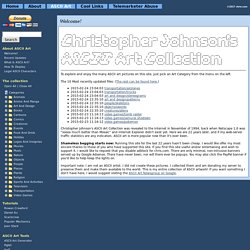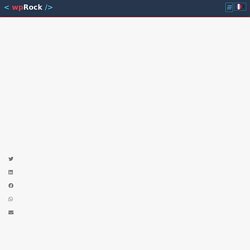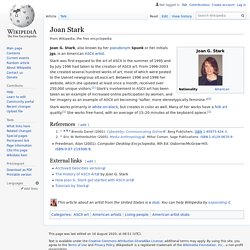

Asciiflow - ASCII Flow Diagram Tool. All the images. Caca Labs. Samuel Hocevar. Un article de Wikipédia, l'encyclopédie libre. Samuel Hocevar De 1995 à 1997, Hocevar a étudié dans les classes préparatoires du lycée Fabert[2]. Diplômé en 2002 de l’École centrale Paris où il s’est spécialisé dans les systèmes électromécaniques, la mécatronique appliquée et la gestion de projet, il a été le lauréat du « Prix des technologies de l’information et de la communication[3] » décerné par la SNCF le , et effectue depuis un doctorat à l’École nationale supérieure des télécommunications. Auteur de la licence libre WTFPL v2, Sam Hocevar est particulièrement connu pour son implication dans les logiciels libres, notamment dans le projet Debian, mais également le projet VideoLAN, auquel il a fait d’importantes contributions depuis 1998, tout particulièrement à VLC media player.
Il est aussi l’auteur de nombreux logiciels tels que zzuf[4] (logiciel de fuzzing), libcaca[5] (bibliothèque logicielle de rendu en art ASCII), ou Monsterz[6] (jeu de réflexion). Sam Hocevar’s homepage. Samuel Hocevar - CV (français) ASCII Art Collection. To explore and enjoy the many ASCII art pictures on this site, just pick an Art Category from the menu on the left.

The 10 Most recently updated files: (The rest can be found here.) Christopher Johnson's ASCII Art Collection was revealed to the Internet in November of 1994, back when Netscape 1.0 was "soooo much better than Mosaic" and Internet Explorer didn't exist yet. Here we are 22 years later, and if my web-server traffic statistics are any indication, ASCII art is more popular now than it's ever been. Shameless begging starts now: Running this site for the last 22 years hasn't been cheap. I would like offer my most sincere thanks to those of you who have supported this site. Important note: I am not an ASCII artist.
¯\_(ツ)_/¯ Kaomoji : Emoji / Smiley en symboles ASCII. Retrouvez une liste de plus de 100 émojis en ASCII art, appelés kaomoji ou encore émoticône japonaise que vous pouvez utiliser grâce à un simple copier/coller.

Ces pictogrammes ont été créés au Japon dans les années 90. Ils se sont ensuite propagés à toute vitesse au travers des messages électroniques, favorisé par la démocratisation du web et de la téléphonie mobile. Les émojis sont maintenant omniprésents dans le monde entier. Dans un premier temps, les émojis étaient uniquement textuels comme :) ou :(. C’est DOCOMO, une entreprise japonaise de téléphone portable qui est à l’origine des premiers émojis imagés. Emojicon / ASCII Emoji : Visages et expresions ಠ_ಠ ಠ_ಠVisage de désaprovation de reddit (。◕‿◕。)Visage minion avec de gros yeux ( ゚Д゚) ( ゚Д゚)Surprise, Braillard (╬ ಠ益ಠ) (╬ ಠ益ಠ)Visage fâché ( ͡° ͜ʖ ͡°) ( ͡° ͜ʖ ͡°)4chan. Joan Stark. Joan G.

Stark, also known by her pseudonym Spunk or her initials jgs, is an American ASCII artist. Stark was first exposed to the art of ASCII in the summer of 1995 and by July 1996 had taken to the creation of ASCII art. From 1996-2003 she created several hundred works of art, most of which were posted to the Usenet newsgroup alt.ascii.art. Between 1996 and 1998 her website, which she updated at least once a month, received over 250,000 unique visitors.[1] Stark's involvement in ASCII art has been taken as an example of increased online participation by women, and her imagery as an example of ASCII art becoming "softer, more stereotypically feminine. Stark works primarily in white-on-black, but creates in color as well.
References[edit] ASCII Art Archive.